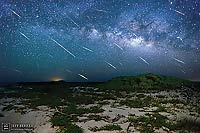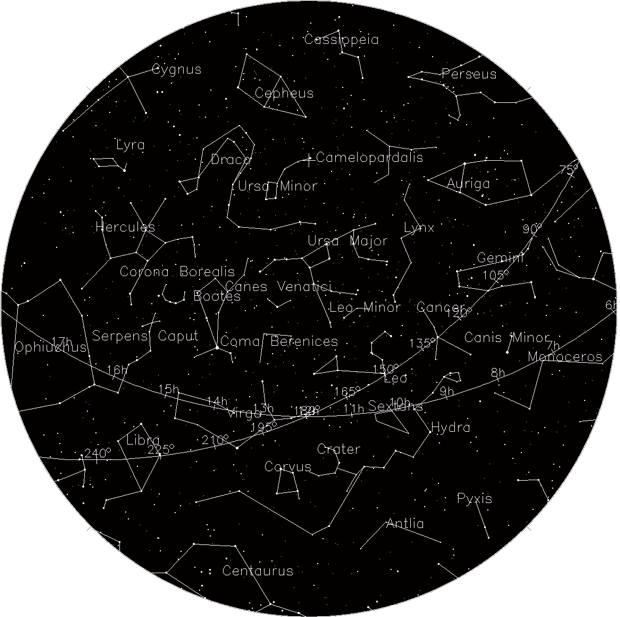When you think of meteor showers, what is the first thing to come to mind? If you said the Perseid, a famous meteor shower that happens each fall, you certainly wouldn’t be alone. But for those that like to gaze at the stars there is reason to be excited about springtime as well. Between the end of April and mid May, find a location where the sky is truly dark, and you’ll be in for a treat.
The Eta Aquarid Meteor Shower peaks this year on May 5th, just before dawn. If you’re lucky you could spot up to 40 shooting stars an hour during that time. When you watch those streaks of light shoot across the night sky, what you’re actually seeing are burning fragments of the comet Halley. Halley last graced our skies in 1986, and it’s been a regular visitor for tens of thousands of years.
Halley was first recorded in 446 BC, when the ancient Greeks made note of its passing. It shoots by the earth approximately every 75 years, easily noticed by all those that dared to gaze at the sky throughout human history. Chinese astronomers recorded the comet in 239 BC, and its passing was noted in Babylonian records in 87 AD. Its appearance in 1301 may have inspired the famous painting “The Adoration of the Magi” by Giotto. When you gaze at the shooting stars during the Eta Aquarid Meteor Shower, you are connecting with history.
The view of shooting stars and that feeling of connection to a deep and global past is only possible with a truly dark sky. Many of these meteors won’t be bright enough to be seen behind the glow of terrestrial lights. Fortunately for those of us in southeast Utah, there are many places that are dark enough to truly see the stars. By taking action to protect these awe-inspiring dark skies, we are ensuring that people can continue to experience the wonders of a starry sky and the connections it brings for generations to come..
Moon Happenings
May 11 - First Quarter at 7:12pm
May 18 - Full Moon at 3:11pm

